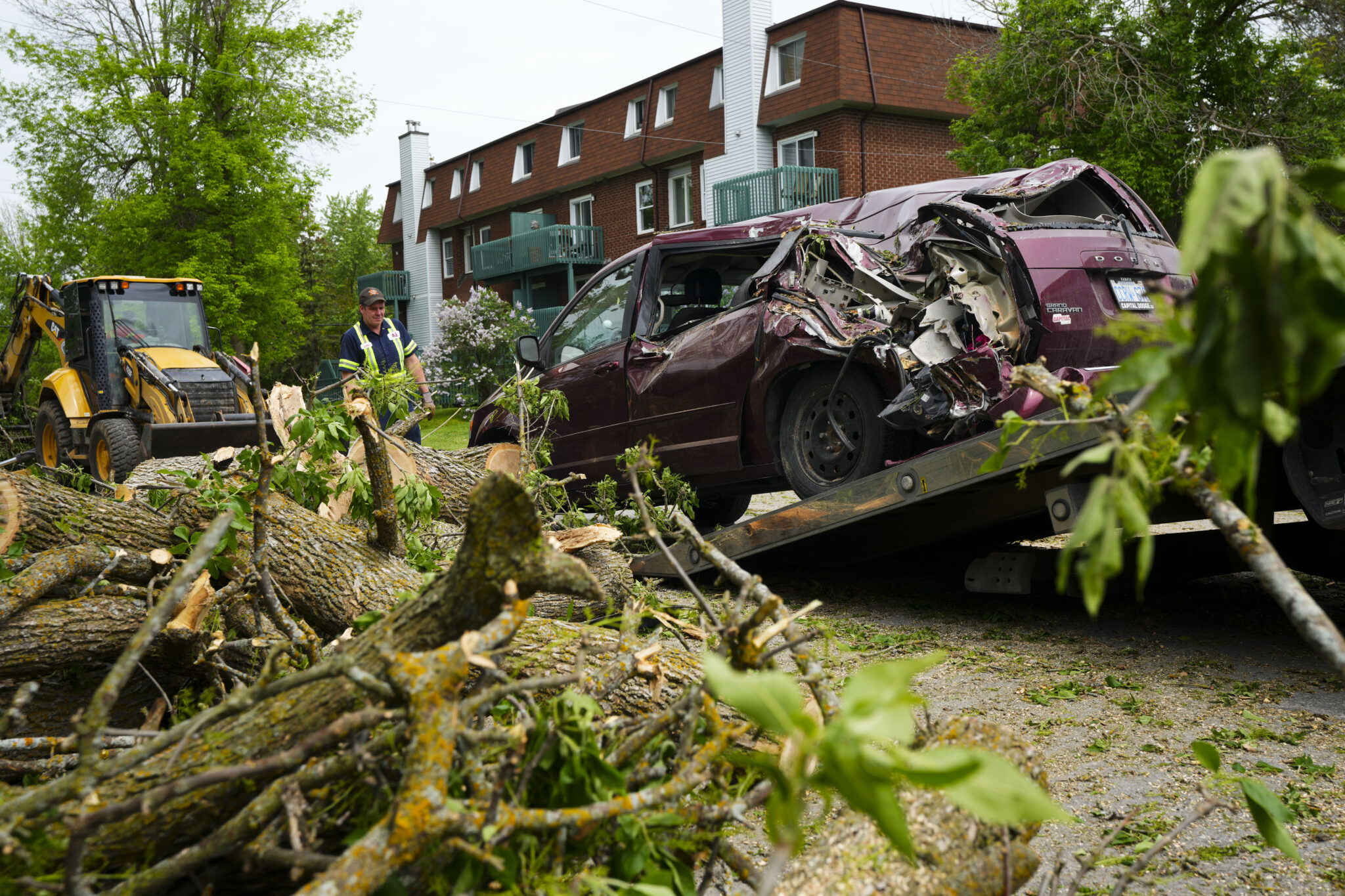
Becoming better at planning for disasters
June 6, 2022 by Alyssa DiSabatino

Print this page Share
If the ongoing flooding in Manitoba and the Ontario/Quebec derecho storm of last month taught us anything, it’s that we must change how we think about natural disasters, argue the Institute for Catastrophic Loss Reduction’s Glenn McGillivray, and PhD candidate Korey Pasch, in an op-ed for the Globe and Mail.
“Better plans, processes and procedures before, during and in the aftermath of these events” should be instituted so that that natural “perils” don’t compound into “disasters,” write McGillivray, managing director at ICLR, and Pasch, PhD candidate at Queen’s University’s department of political studies.
The idea of a “natural” disaster in itself needs to be rethought, they write. “While the peril is natural, whether we let it become a disaster is our choice.”
The derecho that swept through Ont. And Que. last month, causing over 1,000 km of damage and at least 10 deaths is being hailed as one of the Top 5 or 10 costliest severe convective storm events for the P&C industry on record, Aon’s Impact Forecasting states in its recent Weekly Cat Report — and this is even before damage totals have been finalized.
McGillivray previously told Canadian Underwriter the industry would see “pretty big losses” from the derecho storm once estimated.
However, “the outcomes of these events are by our own design,” he and Pasch write.
Although extreme storms may not be preventable, there are ways for homeowners, businesses, insurers and municipalities to build resilience against wind peril — or any peril, for that matter.
“We’ve been fighting to have wind resilience features incorporated into the building code, and the homebuilding industry has been pushing back,” McGillivray told Canadian Underwriter following the derecho storm.
“Where we see the most damage is in roof to wall connections,” he said.
Improving roof-to-wall connections and creating continuous load paths during construction ensures there’s no weak points in a house, he told Canadian Underwriter.
While the industry continues to wade through a swath of incoming reports of damage from last month’s wind and storm events, disasters may begin to pile up even more this spring— the province of B.C is predicted to see it’s wettest June in a decade as flood risk continues to rise due to steady rain and fast snowmelt.
Evacuation orders have been issued for communities in northwestern B.C. as the flood risk rises across the region.
“We aren’t able to work through the challenges presented by one and recover before we can move on to the next. Instead, response and recovery for several disasters overlap, often over the course of several months or even years,” write McGillivray and Pasch.
Comments from adjusters following last month’s storms bear this out. “The recent Ontario storm will draw some attention and resources away from potential deployment in Manitoba,” Walter Waugh, vice president of loss adjusting for Western Canada at Crawford & Company, told Canadian Underwriter following the Manitoba floods.
John from Costello’s Towing hoists a vehicle that was crushed under tree in the Ottawa Valley community of Carleton Place, Ont. on Tuesday, May 24, 2022. The vehicle was trapped with it occupants under a tree in a major storm that hit parts of Ontario and Quebec on Saturday. THE CANADIAN PRESS/Sean Kilpatrick